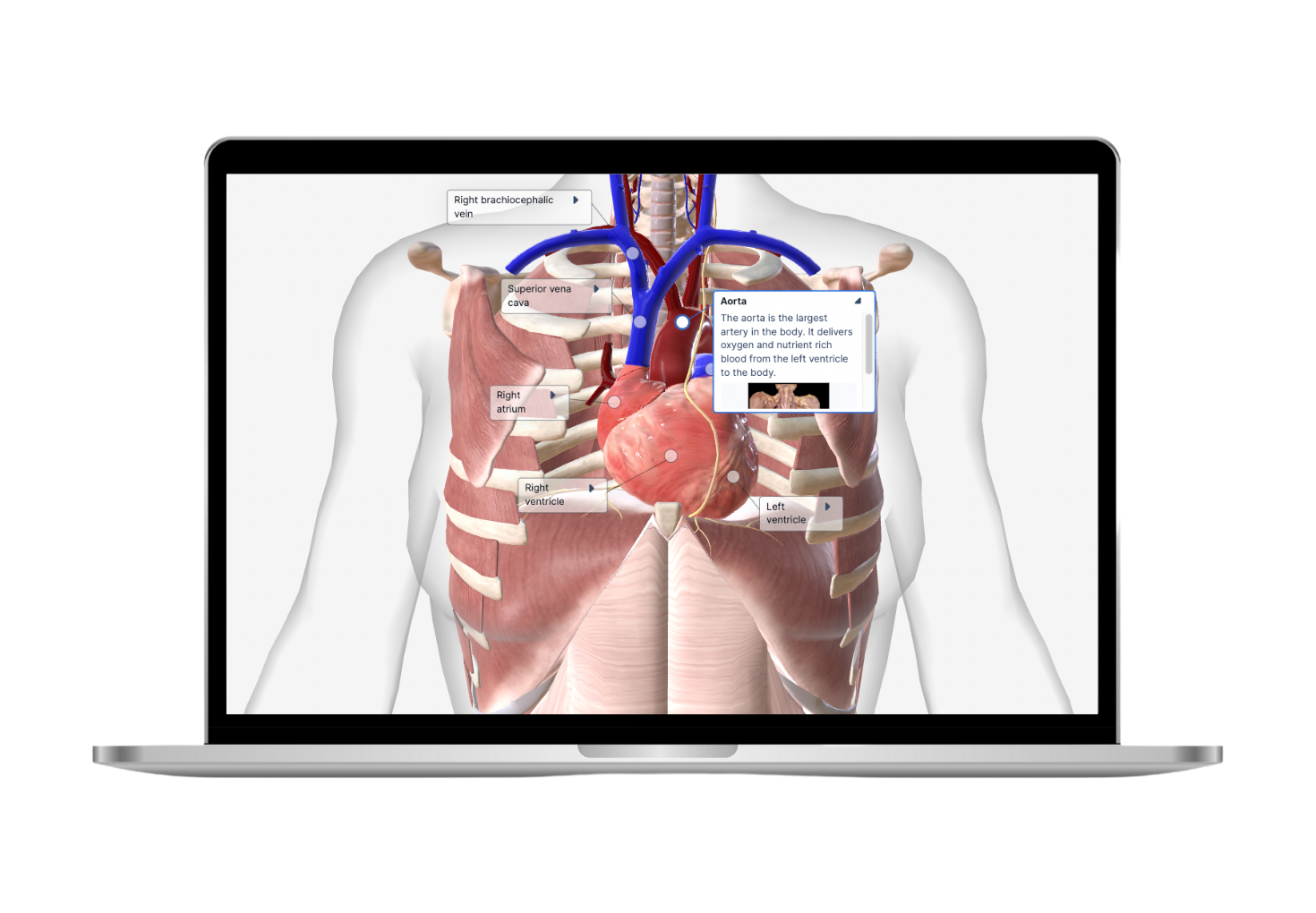An award-winning virtual lab
Pearson’s Practice Anatomy Lab (PAL), available through Mastering A&P, provides students and instructors always-on digital access to the lab specimens required for the A&P lab course. This includes fully interactive 3D examples of human cadavers and other anatomical models. Through collaboration with expert authors, students, and educators, we’ve created an optimal virtual anatomy lab experience that was recently named Best Virtual Lab at the 2024 SIIA CODiE Awards.
One judge remarked that it was “an engaging and well-designed instructional tool that is clearly designed to support A&P faculty as they help students understand internal and external anatomy.”
Here are five things that makes it a winner with students and educators:
1. Available anywhere, anytime: Whether on a desktop or on mobile, it’s available 24/7, when and where students need it most.
2. Built-in pronunciation practice: Latin and Greek-based anatomical terms aren’t easy, but it’s critically important that students can pronounce them properly. PAL 4.0 includes audio pronunciations to aid their learning.
3. Live in 3D: The 3D models are fully interactive to help students explore the human body’s especially hard-to-visualize structures, like heart valves and arteries. Pearson’s expert authors customized each model to align with the Human Anatomy & Physiology Society (HAPS) learning outcomes for undergraduate anatomy, ensuring students are working towards a standard. Dr. Tyler Jack at Greenville Technical College said, “The content written by subject matter experts in the 3D models section of PAL 4.0 brings substantial value to students by providing detailed explanations, clarifying complex concepts, highlighting contextual relevance, serving as supplemental learning material, and acting as a study and review resource.”
4. Self-study made easy: PAL features self-review where students can locate and learn the structures and watch 3D animations of muscle actions. For those who want more practice, students can build their confidence with access to practice quizzes and fill-in-the-blank lab practicals, as well as customisable flashcards. Instructors can also assign students individualized content to complete.
5. Accessibility is a priority: All students should be able to have access to great learning experiences. PAL 4.0 was developed to meet WCAG (Web Content Accessibility Guidelines) accessibility standards to include keyboard navigation and screen-reader capabilities.
The instructors we spoke to loved using the product. Dr. Laura Juarez de Ku at Austin Community College told us “I LOVE the PAL 4.0, including the new images, the easy-to-use layout, and the audio. I am confident my students will benefit from using it."
Dr. Hilary Lease of the University of Arizona added: “A really cool program. Students can see body parts at different angles, and easily quiz themselves on material; I think this is much more effective than just staring at various body parts with labels. The 3D rotation, coupled with the ability to isolate, label, etc. Really neat to see the body like this.”
As a company with a mission to create vibrant learning experiences for real-life impact, Pearson is proud to help students and instructors enhance their anatomy and physiology studies, giving high-quality, on-demand learning experiences to the healthcare workers of tomorrow. We think that’s something that aorta be celebrated.
Learn more about 4.0
